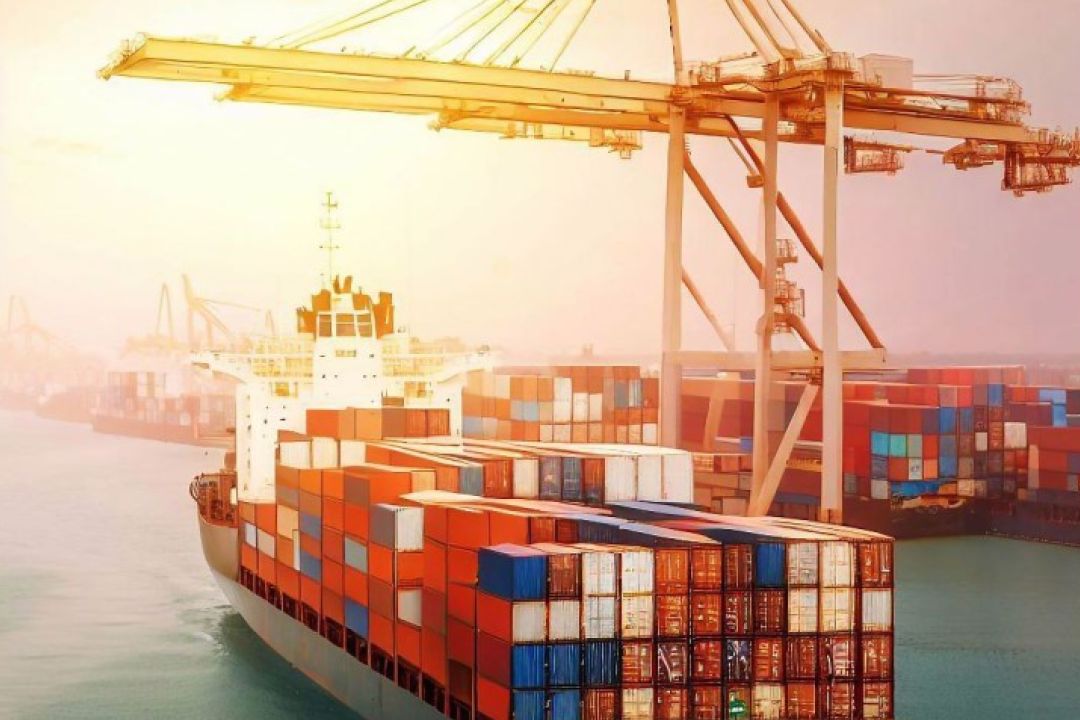
Ports and ships are major consumers of energy, requiring significant amounts for cargo handling, ground transportation, electricity, and ship propulsion. Globally, maritime vessels contribute approximately 3% of total greenhouse gas (GHG) emissions annually. If the maritime industry were considered a country, it would rank as the sixth-largest emitter of GHGs worldwide.
Additionally, maritime activities generate significant amounts of air pollutants, responsible for 9% of global sulfur oxides (SOx) and 18% of nitrogen oxides (NOx) emissions each year. Seaports, where ships, trucks, cargo equipment, and railcars converge, often have heightened emissions.
About 12% of the United States population lives near seaports. Due to the increased pollutant levels, these communities frequently face higher incidences of respiratory and cardiovascular diseases, compromised soil and water quality, and overall poorer health outcomes.
Navigating Uncertainty in Port Planning
Ports face continual changes and uncertainties that impact their operations, including shifts in climate, societal attitudes, geopolitical tensions, consumer demands, policies, funding opportunities, and technological advancements.
The forces driving climate action, such as regulations, financial incentives, stakeholder expectations, and customer demands, are also evolving quickly. These changes pose risks like legal challenges from noncompliance, financial losses from market shifts, damage to public reputation, and costs from prematurely phasing out obsolete assets. These risks are often not fully acknowledged or quantified in current strategic planning but are potentially more critical than the risks from uncertainty itself.
To effectively mitigate these risks and plan for the future, ports need a holistic approach to decarbonization rather than tackling it piecemeal by asset or user. This involves mapping out actions across multiple time horizons that correspond to different stages of planning and implementation.
There are several strategies to reduce emissions in the maritime sector, including the adoption of low-carbon liquid and gaseous fuels, the use of hybrid and all-electric drivetrains, improvements in clean energy use, energy efficiency, and operational optimization, and the implementation of exhaust treatment and carbon capture technologies.
Investing in decarbonization technology in port operations is a crucial step toward sustainability in the maritime industry, ranging from renewable energy sources to shore power and digital emissions management platforms to innovative zero-GHG cargo handling equipment.
Ports act as pivotal hubs in the global supply chain, and their environmental impact is significant due to the heavy machinery, large ships, and extensive logistics involved.
Here’s a guide on how to strategically invest in decarbonization technologies in ports:
1. Assessment of Current Carbon Footprint:
Begin by assessing the port’s current carbon emissions and energy use to identify critical areas where emissions can be reduced. This involves auditing operations, energy use in buildings, machinery, and docking ships.
Utilize advanced tools and software for carbon accounting to track and manage emissions data effectively.
2. Set Clear Goals and Objectives:
Define clear, measurable goals for carbon reduction based on the initial assessment. These should align with international goals such as the Paris Agreement or the International Maritime Organization’s targets.
Establish short-term and long-term objectives, including incremental milestones to track progress.
3. Investment in Green Infrastructure:
Upgrade to energy-efficient lighting and building systems to reduce the energy consumption of port facilities.
Invest in renewable energy installations to power operations, such as solar panels and wind turbines. Consider the feasibility of on-site renewable energy to offset the use of conventional energy sources.
4. Electrification of Equipment and Vehicles:
Replace diesel-powered cranes, forklifts, tugs, and other handling equipment with electric versions. This reduces direct emissions and can be powered by renewable energy.
Implement shore power systems (also known as cold ironing) that allow ships to shut down their diesel engines and connect to the local electricity grid while docked, significantly cutting emissions from berthed ships.
5. Alternative Fuel Use:
Transition to alternative, low-carbon fuels for vehicles and ships, such as LNG (Liquefied Natural Gas), hydrogen, or biofuels. Support initiatives for green hydrogen and ammonia as future fuels.
Encourage shipping lines to use cleaner fuels through incentives or regulations.
6. Automation and Smart Technologies:
Invest in smart technologies and automation to optimize operations and reduce energy use. This includes automated handling equipment and AI-driven systems for managing traffic and logistics.
Implement systems for real-time monitoring of emissions and energy use to continually optimize and reduce the carbon footprint.
7. Collaboration and Partnerships:
Engage in partnerships with technology providers, government bodies, and environmental organizations to access expertise, funding, and support.
Join global coalitions such as the World Ports Climate Initiative or regional collaborations focused on reducing port emissions.
8. Training and Capacity Building:
Provide training for port staff and stakeholders on new technologies and best practices in sustainability.
Foster a culture of environmental responsibility and continuous improvement among the workforce.
9. Regulatory Compliance and Incentives:
Stay informed about local, national, and international regulations regarding emissions and environmental performance. Ensure all investments are compliant with these standards.
Explore government and international funding opportunities, grants, and incentives that support decarbonization projects.
10. Monitor, Report, and Improve:
Continuously monitor the performance of implemented technologies through the established carbon accounting framework.
Regularly report these outcomes to stakeholders and the public to maintain transparency.
Use collected data to refine practices and invest in new technologies as they become available.
By following these steps, port operations can significantly reduce their environmental impact and contribute to the global effort toward decarbonization. These investments help comply with increasing regulatory pressures and position the port as a leader in sustainability, potentially attracting more business from environmentally conscious shipping companies and logistics providers.

I’ve spent the past 18+ years helping ports, supply chains, and global businesses turn sustainability goals into real, measurable results.
From leading billion-dollar infrastructure projects to building my own consulting firm, I’ve seen how the right strategy can turn pressure into opportunity.
My mission today is simple: help leaders like you build sustainable, future-ready businesses that don’t just check boxes—but actually make an impact. One decision, one project, one team at a time.
Let’s build what’s next—together.
Have a project or idea in mind?
I’d love to hear what you’re working on.
Book a quick call here